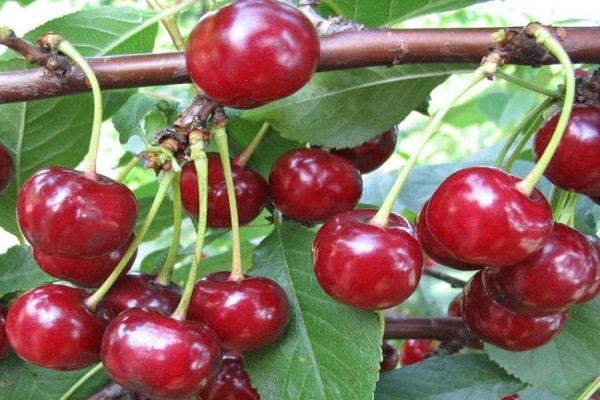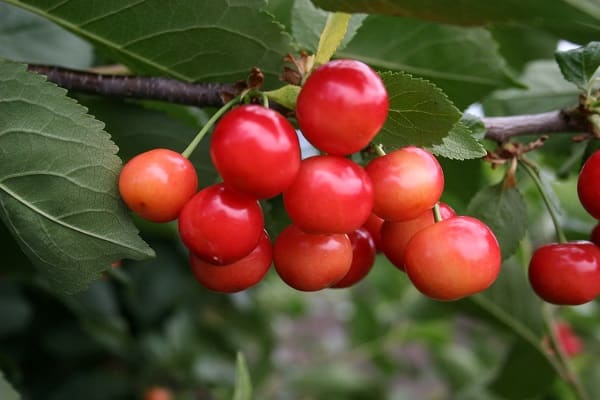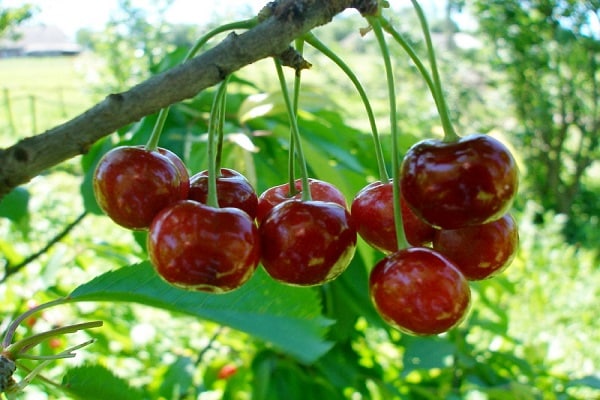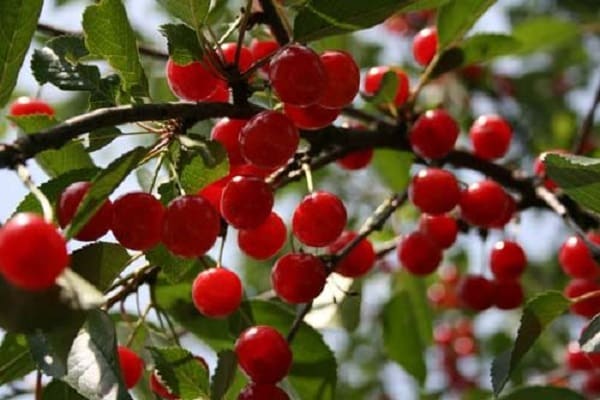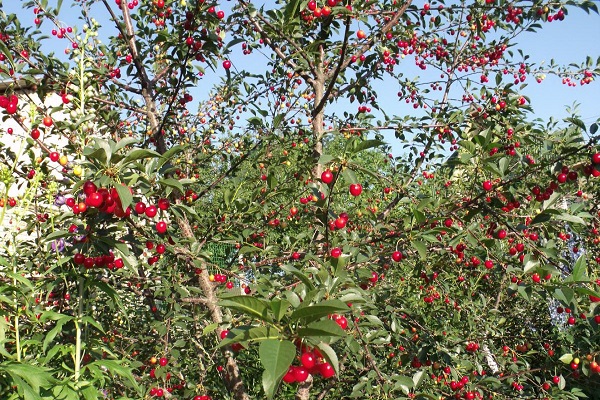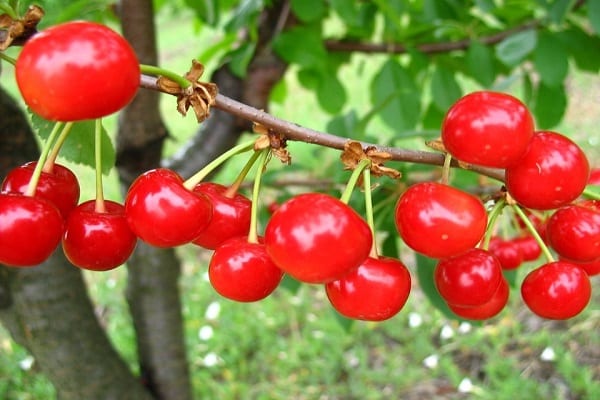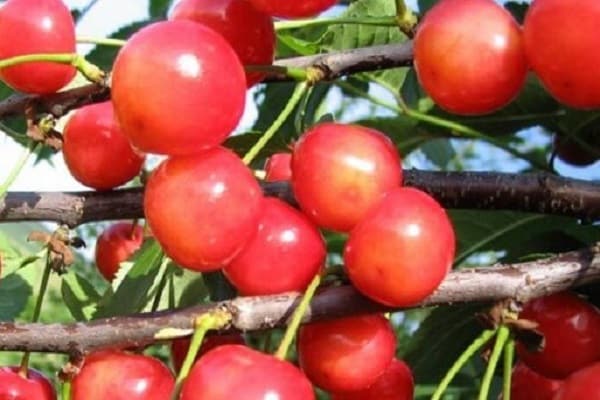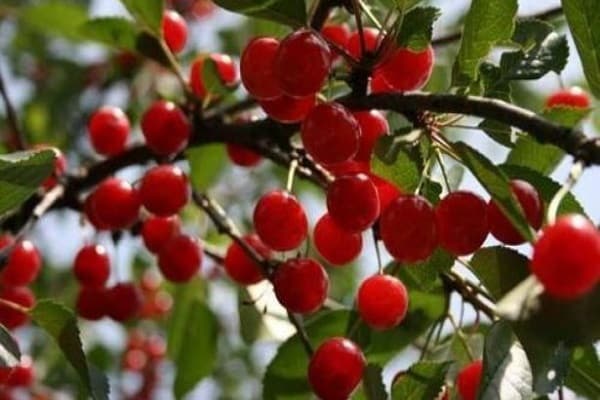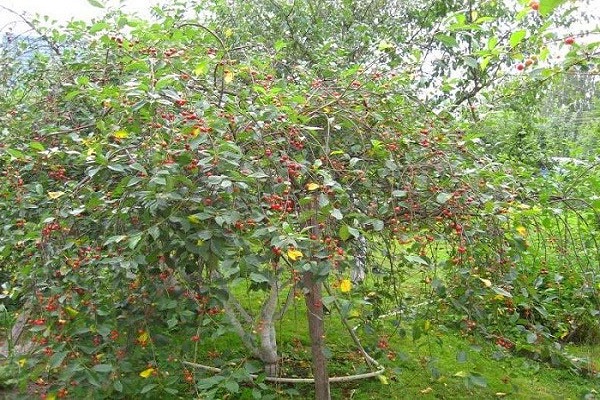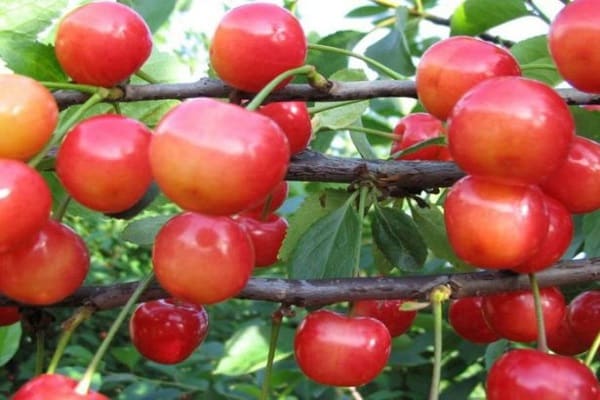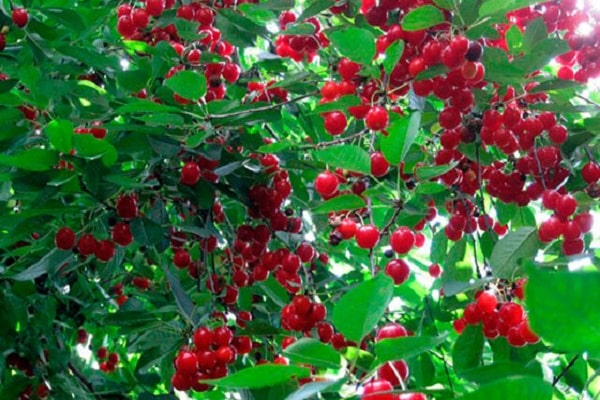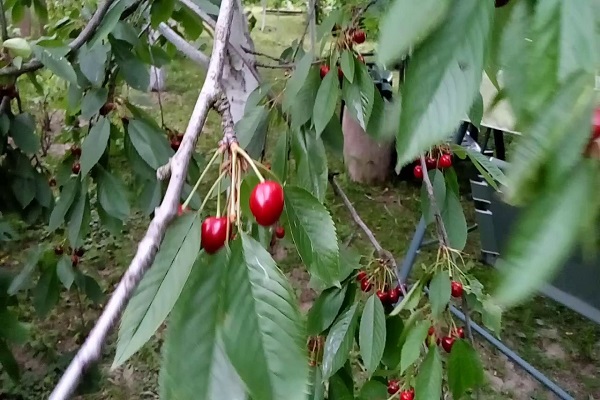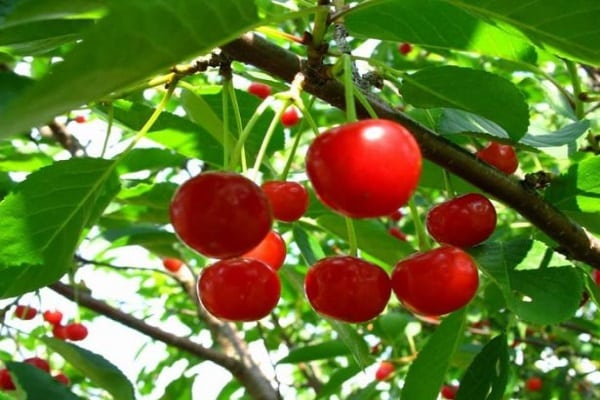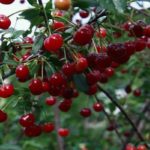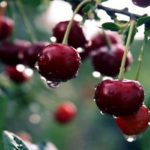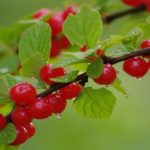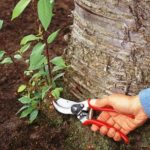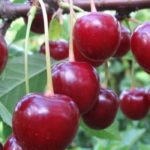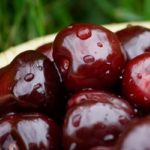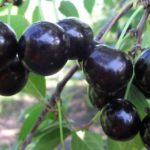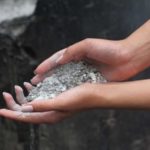New varieties of cherries appear regularly thanks to the precise work of breeders. But many people prefer old, proven stone fruit hybrids. Among the popular varieties are Shpanka cherries, which have been grown for more than 200 years. This sweet hybrid of cherries and cherries is popular among gardeners in the southern and central regions. Spanish cherries are valued for the aroma and taste of large fruits.
History of origin
The natural cross-pollination of cherry trees with sweet cherries was the beginning of the appearance of the Shpanka variety. Through widespread dissemination, the culture became known not only in its homeland, Ukraine, but also in the southern regions of Russia, in Moldova. The work of breeders to improve the variety led to the appearance of varieties of Shpanka cherries, which settled in the gardens of the Volga region, Moscow region, and reached the Urals and Siberia.
Description of the variety
Shpanka cherry is a tall crop, reaching 6 meters or more. With an extensive crown of a round shape, which is formed by straight and long branches located at right angles to the trunk, it becomes a real queen of the garden. But they note the fragility of the shoots, reaching a length of 3 meters. Strong winds can break them off.
If the trunk and branches of the Shpanka cherry are dark brown, then the young shoots are lighter. Therefore, when pruning, it is easy to remove old shoots.
On dark red petioles, oval leaves, slightly elongated, are attached to the branches. The appearance of inflorescences with 3-5 pinkish flowers makes the tree the main decoration of the May garden. The structure of the stamens and pistils is such that partial pollination of the cherry occurs.
The description of the variety must include the fact that starting from the 5th-6th year of life, the tree bears fruit with large berries with a woody seed inside. And the older the crop, the more fruit it produces annually.
Advantages and disadvantages
One of the reasons for choosing Shpanka cherries for growing in the garden is that varieties of the variety can:
- grow successfully in regions with hot and dry summers;
- tolerate frosts and temperature drops in winter down to -20 degrees;
- partially pollinate on its own;
- bear fruit at the end of June;
- consistently produce 35-40 kilograms of berries from one tree;
- resistant to diseases.
The disadvantages of the Shpanka variety include the fact that the berries are not stored for a long time and do not tolerate transportation well. During the growing season, the tree often suffers from strong winds. Its branches break off due to their fragility. Cherries also have weak bark, which cracks due to spring frosts and during cold winters.
Characteristic
To begin cultivating Shpanka cherries on your site, the gardener must know all the nuances of the tree’s characteristics.
Growing regions
Many gardeners want to grow a hybrid with wonderful fruits, large and sweet, on their plots. Shpanka cherry comes from Ukraine, so the tree takes root and grows best in the southern regions. The climate of Moldova and Belarus is preferable for it. Gardeners in Central Asia are happy to grow sweet fruits, because Shpanka easily tolerates drought.
A tall, spreading tree is also found in gardens near Moscow. An early-ripening variety of stone fruit crop has taken root in central regions with cold winters and short summers. Moreover, breeders have tried to develop varieties of cherries that successfully bear fruit in the Bryansk, Kursk, and Leningrad regions.
Fruit quality and yield indicators
What is most valued about cherries is the quality of the berries. For the Shpanka variety, fruit characteristics include:
- weight up to 45 grams;
- the flesh is juicy under a bright light red skin;
- round shape with slight flattening;
- the presence of a yellowish bone inside, which is easily separated;
- the taste is sweet with a small amount of acid.
Fruiting of the Shpanka cherry begins in the 2nd year of life. But at first a few berries appear, only by the age of 4 their number increases sharply. A nine-year-old tree has all its young shoots strewn with clusters of fruits.Productivity increases to 40 kilograms for an adult plant.
Failures in fruiting occur when the inflorescences are damaged by spring frosts.
Pollinators
Partial self-pollination of cherries occurs for 40-50% of flowers. The rest need pollinators from other trees. For this purpose, cherry trees Griot Ostheimsky, Ukrainian, Stoykaya are planted nearby. Pollination by the Lyubskaya variety occurs successfully. Cherry grows well next to rowan, elderberry, and plum. At the same time, the tree is removed from other crops by 1.5-2 meters.
Popular varietal varieties
Gardeners need to have a good understanding of the varieties of Shpanka variety in order to choose the option that is suitable for a particular region:
- Donetsk cherries were obtained at the experimental station by crossing with sweet cherries. Shpanka is valued for its large fruit, since the berries can reach a weight of 6-7 grams. The peak fruiting of the species occurs in the 9th year of the tree’s life. The advantage of the variety is its resistance to drought. After frost damage, the crop quickly recovers. To pollinate the Donetsk Shpanka, it is recommended to plant cherries nearby.
- Most recently, the Bryansk cherry, specially bred for cultivation in the Central regions, was included in the State Register. The tree is distinguished by a short trunk and straight, upward-growing shoots. The taste of medium-sized fruits is sweet and sour. The yield corresponds to 30-40 kilograms from 1 adult tree.
- The Shimskaya cherry, reaching a height of 3 meters, was bred for the North-Western regions. The first fruits appear on the shoots 3-4 years after planting. They reach 3 grams in weight, red in color, light in color. The bush type of cherry has dark brown bark.To increase productivity, the variety requires regular crown formation.
- The hybrid Dwarf Shpanka was obtained by pollinating cherries with sweet cherries. The tree rarely reaches a height of 3 meters. It easily tolerates low temperatures, so it is actively cultivated in the northwestern regions, the Urals, and Siberia. The tenacious and hardy Shpanka variety is loved for its resistance to diseases and pests.
- Large-fruited dessert cherries are intended for preparing preparations for the winter and freezing berries. The disadvantage of this variety is that the fruits do not tolerate transportation well, they cannot be stored for a long time, but must be processed immediately after harvesting.
An interesting variety of the variety was bred for distribution in the Kursk region. Unlike other types of Spanka, it is Amorel cherry, which has a red skin and colorless juice. Kursk cherry does not tolerate frost well, so it must be protected from low temperatures with spruce branches.
Features of planting and care
The stone fruit variety Shpanka prefers light, loose soils with neutral acidity. It is better to choose well-lit areas with groundwater below 1.5 meters.
The pit for planting cherries is prepared in advance, 2-5 weeks in advance. They dig it in accordance with the norm, 60-70 centimeters wide and 40-50 deep. The holes are filled with soil mixed with humus and phosphate-potassium fertilizers. On the day of planting, take the top nutrient layer of soil and pour a mound in the center of the hole. A cherry seedling is placed on it. After this, the roots begin to fall asleep, not forgetting about deepening the root collar. It should not be 5-6 centimeters above the ground level.
After filling the hole, press the soil well and water the bushes.The tree trunk circle is mulched with a layer of sawdust or humus.
Caring for the Shpanka hybrid includes regular procedures:
- trimming the crown for its formation and renewal;
- watering, 5-6 times in the dry season;
- fertilizing with organic and mineral fertilizers;
- loosening the soil around the trunk;
- mulching.
It is necessary to prune a tree, especially since its branches often break. In spring and autumn, damaged shoots are removed. Old ones are cut out to increase crop yield. Young shoots are not shortened when fruiting begins. For a 9-year-old tree, crown thinning is applied, cutting off diseased, poorly developed shoots.
In arid areas, mulching is carried out on snow, then more moisture will be retained in the soil. In the fall, a layer of mulch is sealed by digging up the tree trunk circle. Throughout the summer, the area around the tree trunk should be kept clean, and the soil should be kept loose. Every year in the spring they fertilize with mullein or bird droppings, diluting them in water in a ratio of 1:5 and 1:12, respectively.
All types of work are carried out to ensure that the tree develops and delights with tasty fruits.
Features of reproduction
An aging tree cannot be productive, so it is necessary to start propagating your favorite variety. To do this, the root shoots are not cut to the ground, but strong and healthy shoots are left behind.. For propagation, a shoot 2 years old and 60 centimeters high is suitable. Dig it up so as to leave as many roots intact as possible. The seedling must be carefully separated from the mother root by chopping it off with a shovel or cutting it with pruning shears. The work is carried out carefully, without violating the integrity of the root system of the mother tree.
The culture can be propagated by grafting.For the scion, hardy varieties of cherries and sweet cherries are chosen. This method should be performed by experienced gardeners; for beginners it is complicated and does not always go well.

